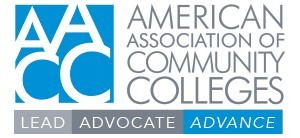DataPoints: Military service-related student aid programs The U.S. Department of Education collects information on the number of recipients and total amount of aid received at each institution of higher education for two military service-related programs. The data reported on the Integrated Postsecondary Education Data System (IPEDS) are for: the Post 9/11 GI Bill, which provides aid for […]
DataPoints: Students’ college costs for 2023-24
Tuition and fees at community colleges this academic year again average 35% of the in-state tuition and fees at public four-year institutions, according to the College Board’s annual report on trends in college pricing and student aid. The average 2023-24 tuition-and-fees listed price for public two-year colleges increased this year by $100 to $3,990. For comparison, […]
DataPoints: Dyad baccalaureate completions
New transfer data from the U.S. Education Department (ED) illustrate that most community college students who transfer to a four-year institution don’t attain a baccalaureate even within an eight-year window. Only 13% of Title IV students who start at community colleges ultimately earn bachelor’s degrees within eight years, according to the data released during an ED transfer […]
DataPoints: Public support and perceptions
Americans are much more comfortable with their tax dollars going to support community colleges than any other higher education sector, and many also feel they are underfunded by states and the federal government, according to an annual New America survey. More than eight in 10 Americans (82%) feel comfortable with their taxpayer dollars going to community […]
DataPoints: Multiple goals
Community college students often have multiple goals. In fact, more than half (55%) of recent two-year college students had at least two goals, and one-third (33%) had three or more goals, according to recent findings by the Strada Education Foundation. Strada polled students who attended a community college within the past 10 years and are not currently […]
DataPoints: Bump in baccalaureate programs
The number of community college baccalaureate programs continues to grow at a good clip, according to new data from the Community College Baccalaureate Association (CCBA). Business is the focus of the largest number of baccalaureate programs this year with 125, up from 117 in 2021. Health professions saw the largest two-year increase, from 80 programs in 2021, […]
DataPoints: MSI presidents
Minority-serving institutions (MSIs) are a source of diversity in the American college presidency, according to findings by the American Council on Education (ACE). CEOs of color comprise 46% of MSI presidencies, compared to 20% of non-MSI presidencies, as ACE’s recent college presidents survey indicates. Furthermore, associate-degree institutions make up 45% of colleges led by MSI presidents, followed by master’s-degree […]
DataPoints: Revenue sources for community colleges
State funds comprise one-third (32.4%) of the community college sector’s revenues, with tuition and local funds each accounting for about 21%, according to the American Association of Community Colleges’ Fast Facts 2023. Federal funds represent 18.5%.
DataPoints: Coming to America
Community colleges serve a diverse student population, including students who have immigrated to the United States and students who grew up speaking languages other than English. These students often face unique challenges on their path to a college degree or credential. Supporting their educational attainment enriches our campus communities and strengthens our country as a […]
DataPoints: Jobs and exposure to AI
What jobs, industries and skill sets is artificial intelligence (AI) mostly likely to affect? That’s still up in the air, but a new study indicates areas that require analytical skills are at the highest risk of “AI exposure,” while those that require more technical skills face lower exposure. That’s the conclusion of a new Pew Research […]
